Total Weight:
48 lbs (21.77 kg)
Battery Weight:
5.5 lbs (2.49 kg)
Motor Weight:
8.8 lbs (3.99 kg)
Frame Material:
6061 Aluminum Alloy, Hydroformed Tubes, Gravity Casting Interface
Frame Sizes:
17 in (43.18 cm)19 in (48.26 cm)22 in (55.88 cm)Frame Types:
High-Step
Frame Colors:
Black with Lime Green Accents
Frame Fork Details:
Rock Shox Recon Gold Air Suspension, TK Tapered, Poploc Remote Lockout, Oil Damping, 120 mm Travel, 15 mm Thru Axle
Frame Rear Details:
Fox Float Suspension with 120 mm Travel and CTD (Climb, Trail, Descend Adjust)
Gearing Details:
10
Speed 1x10 Shimano Deore XT M 786 Shadow Plus, 11-36TShifter Details:
Shimano SLX M 670, Rapidfire, I-Spec, on Right Bar
Cranks:
16 Tooth Chainring
Pedals:
XLC Aluminum Alloy Platform
Headset:
FSA No. 57, Semi-Integrated, Tapered
Stem:
XDURO Aluminum Alloy, Ahead
Handlebar:
XDURO Lowriser Aluminum Alloy
Brake Details:
Shimano Deore M615 Hydraulic Disc with 203 mm Front Rotor and 180 mm Rear Rotor, Shimano M615 Levers
Grips:
XLC Sport with Locking Rings, Flat Rubber
Saddle:
XDURO Light MTB
Seat Post:
XDURO Aluminum Alloy
Seat Post Diameter:
31.6 mm
Rims:
DT Swiss 466d, Double Wall
Spokes:
DT Swiss Industry 2.0 mm
Tire Brand:
Schwalbe Nobby Nic Performance, 27.5" x 2.25"
Wheel Sizes:
27.5 in (69.85cm)Tire Details:
Foldable
Tube Details:
Presta Valve
Accessories:
Aluminum Alloy Chain Guide, Sprocket Equalizing System (S.E.S.) Tensioner
Other:
Quick Release Wheels (Front and Rear), Locking Removable Battery Pack with LED Charge Level Indicator, Shimano HG 54 Chain, XLC EVO Hubs with 15 mm Thru Axle Front and 142/ 12 Axle Rear
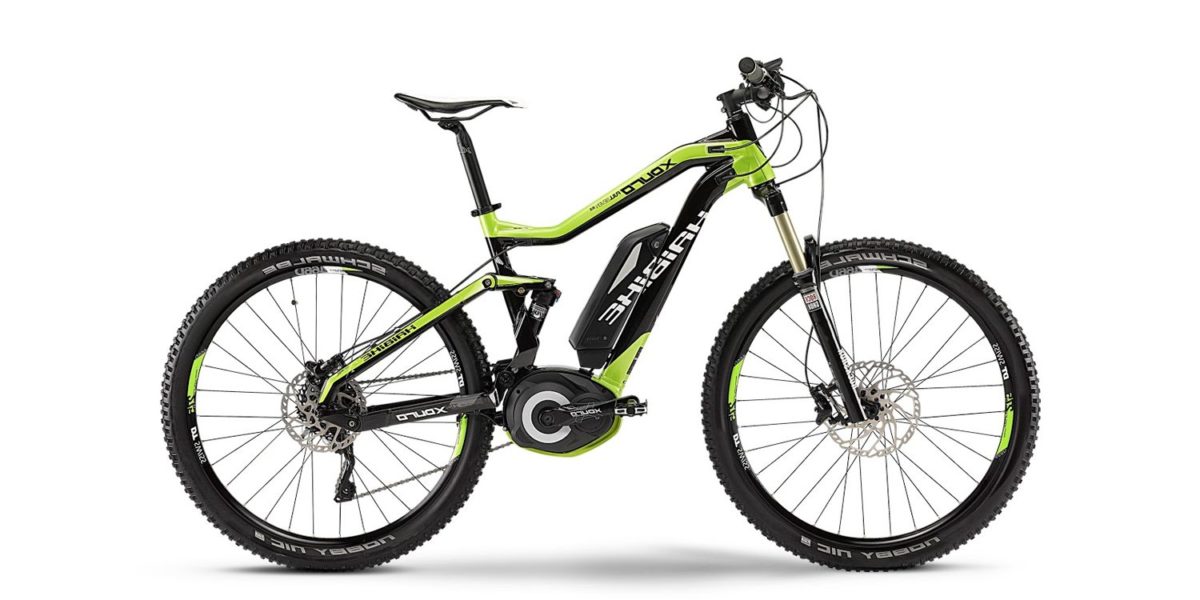






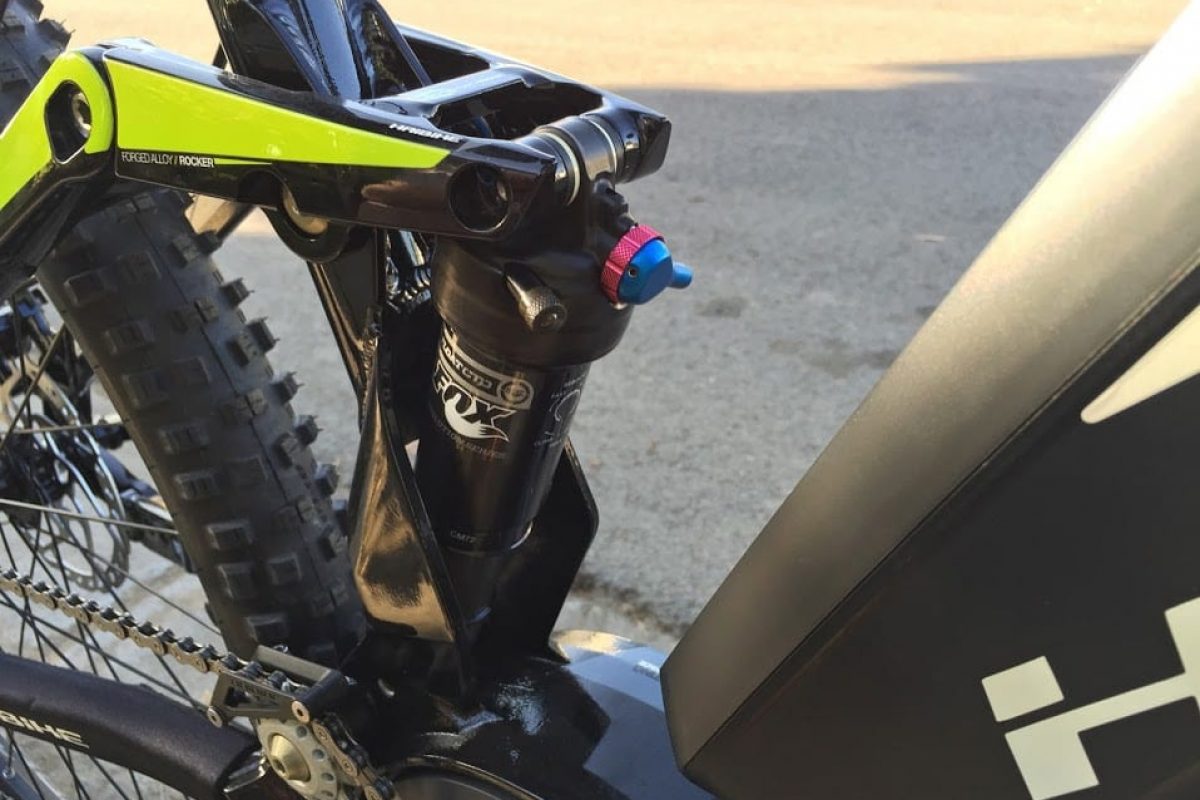




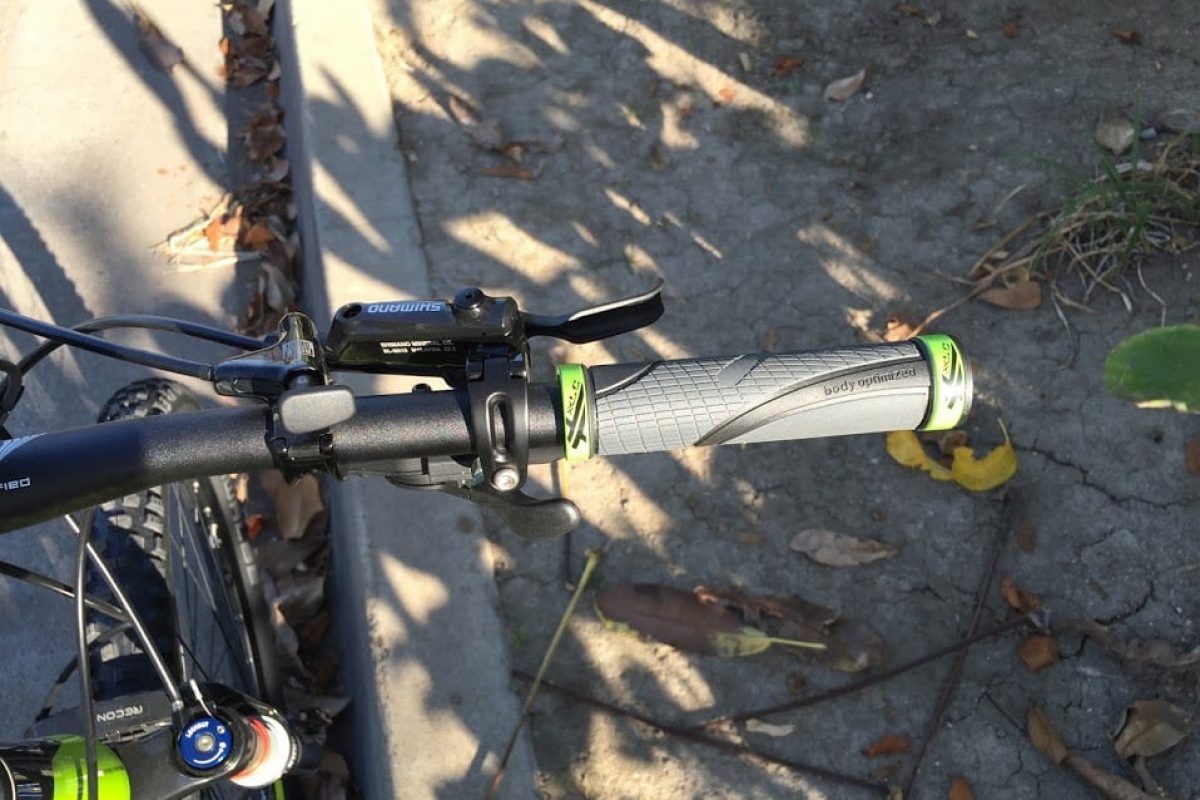


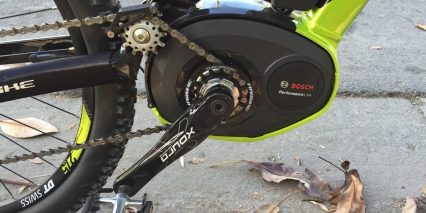
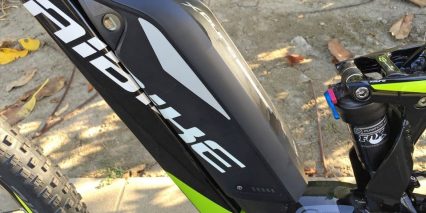
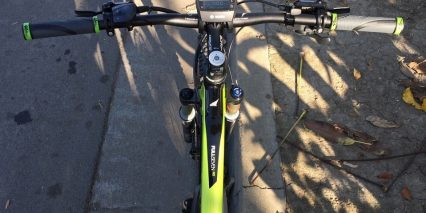
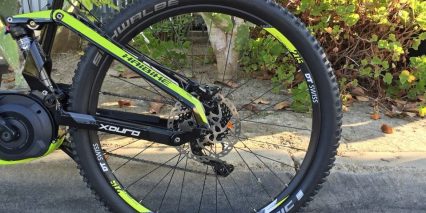
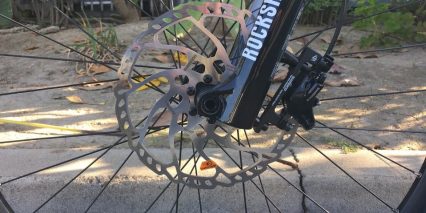
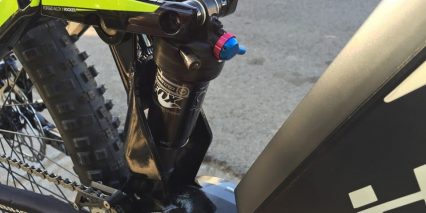
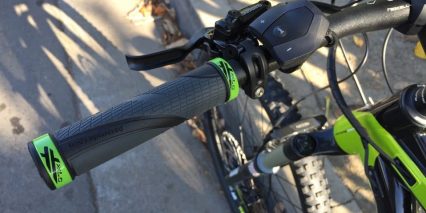
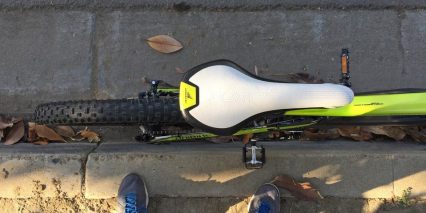
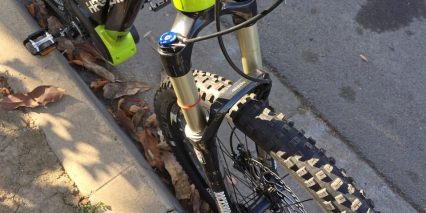
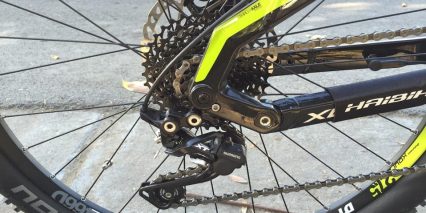
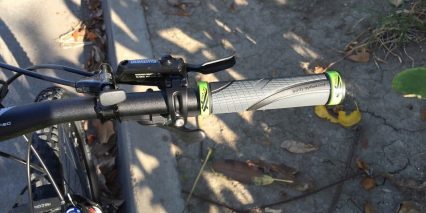

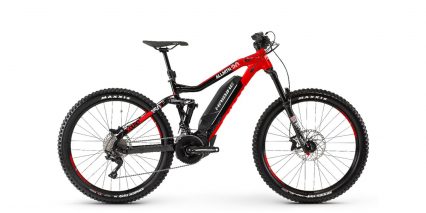
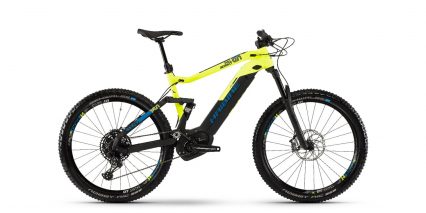
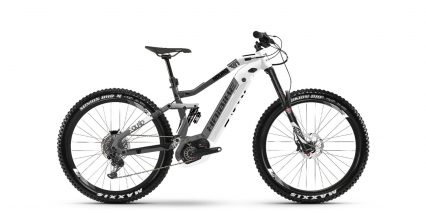

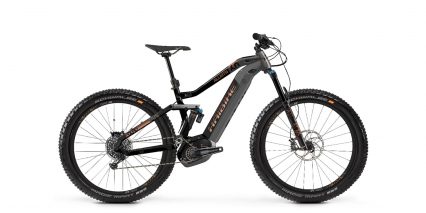
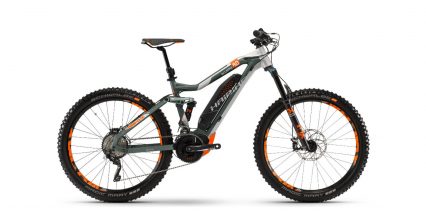
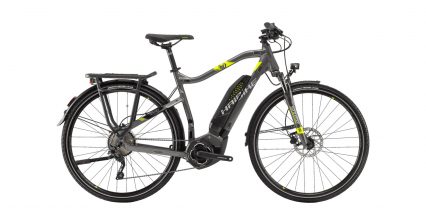
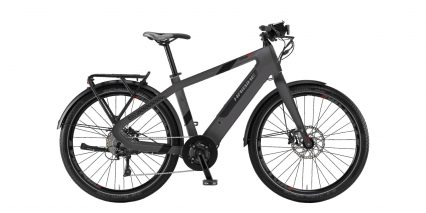
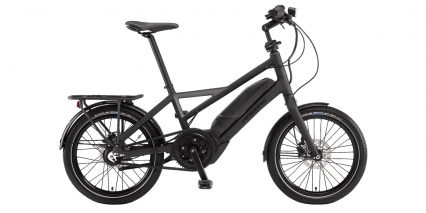
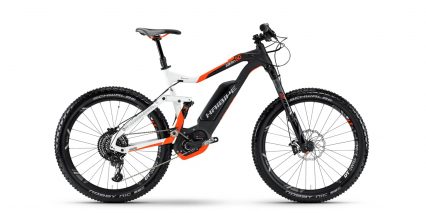
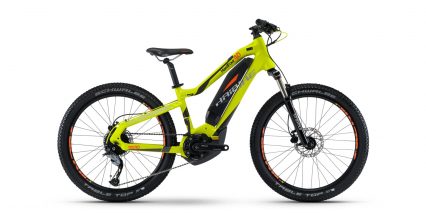
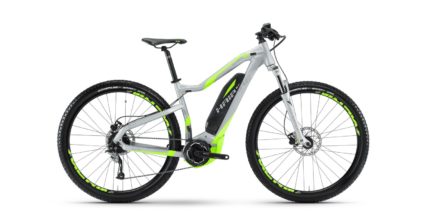
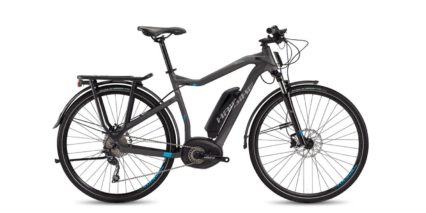
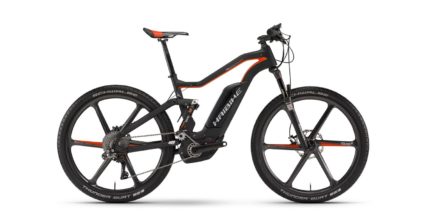

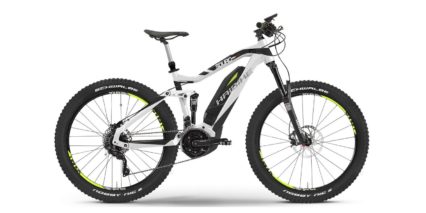
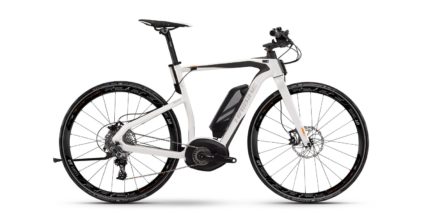
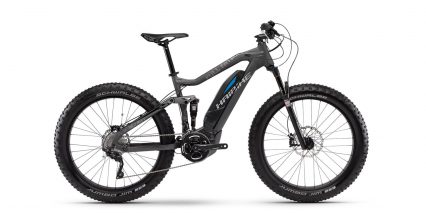
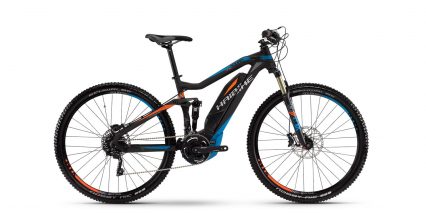
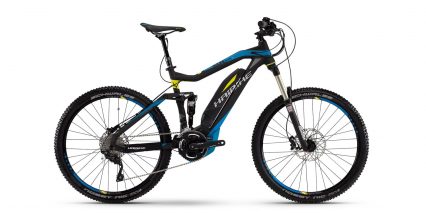
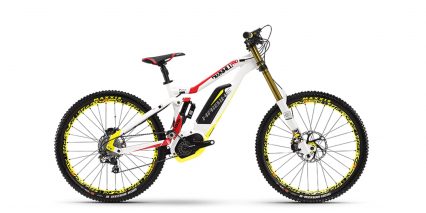
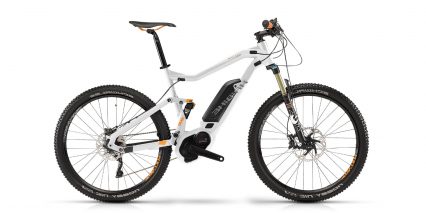
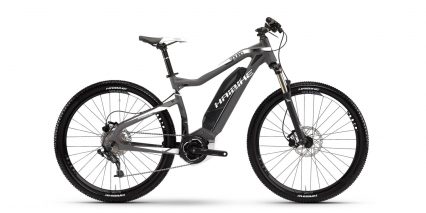
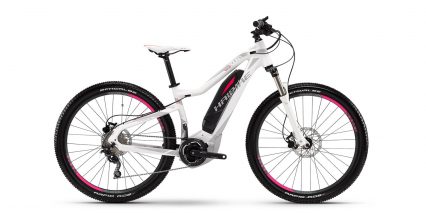
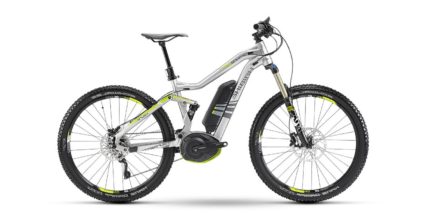

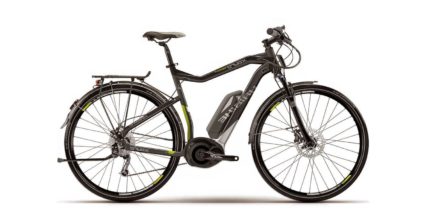

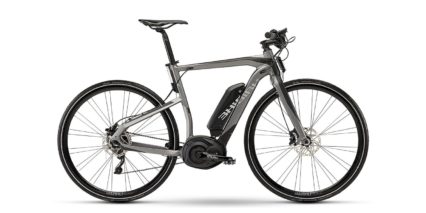
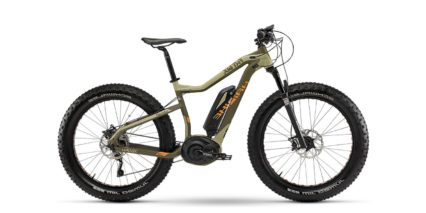
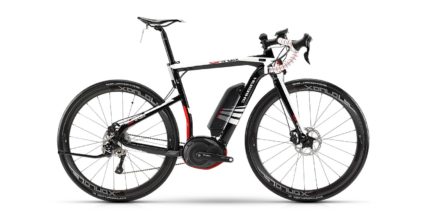
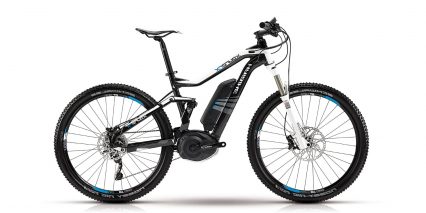
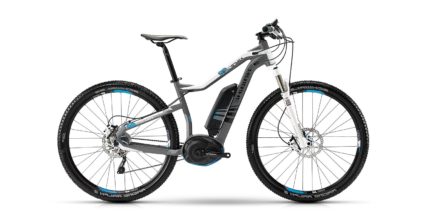
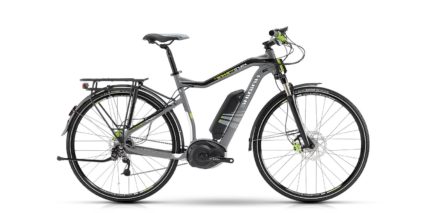
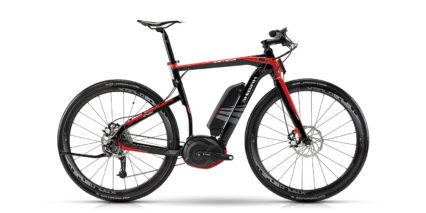
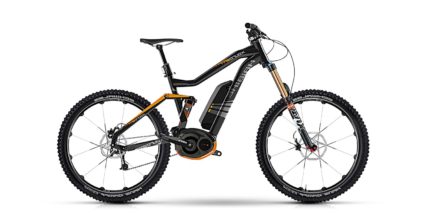
Jack
9 years agoSuch a nice bike, based on the video & written reviews. It’s a shame there isn’t a discussion here. I don’t see a reference to connecting points on the chain stays to mount a fender and/to rack…and one thing I’ve learned from Court’s reviews is that the ‘mountain bike/commuter bike’ line blurs when a manufacturer allows for one to take a trail-ready bike like this one and adapt it for multiple purposes. Court, were there solid connection points on the chain stays to mount a rack, do you remember?
ReplyCourt Rye
9 years agoGreat points Jack, unfortunately many of the full suspension Haibikes lack mounting points (bosses, braze ons) for racks, fenders or bottle cages. You can usually add light weight plastic fenders with zip ties and beam style racks that connect to the seat post (ideal for full suspension due to travel on the rear swing arm). I’ve mentioned this in some reviews and not in others, I try to write from scratch to capture different angles but sometimes neglect details. Great bike, my Uncle has this and has been using it with rack and fenders to commute, here’s a video of him discussing it.
ReplyDarrell
9 years agoCourt, I’ve seen that one twice. Lots of good information. Hope you do more of that type. Dealers an experienced riders of Haibikes.
Darrell
9 years agoIm useing the Topeka seat post rack. Slide on a basket or one of their bags.
ReplyGet the one that angles up as you will need to clear the 4 3/4 inch suspension travel.
Phil Kurello
9 years agoHi Court , Luv your reviews. Road my Giant Anthem 29er today in NE PA. through light snow and ice in the morning which melted into mud. As I was struggled to keep peddling to make the up grade in mud. I kept dreaming about this 2015 Xduro FS . It seem like it would shorten my 35 mile rides from 5 hours to <3 hours. Can you comment on long rides thru mud pack with ebikes . It always seems so nice and sunny on your Demo rides in Austin. Also any looks/rides on 2016 Haibike with new Bosch Cx motor ? Thanks much, Phil Kurello aka Lengthyrider
ReplyCourt Rye
9 years agoHi Phil! Sounds like you’ve got quiet the ride… mud is one of the most difficult terrain types because it tends to be heavier than snow (even damp snow) and is still wet and sticks to your bike adding weight and creating instability. Many of my videos are shot in sunny locations because that’s where the manufacturers are and they let me test their bikes now on site. I also travel around the country and tend to pick warm days to film so my hands don’t get cold holding the camera :P here’s one review from the snow in Colorado. I do plan on reviewing the 2016 Haibike models and hope to do so very soon so keep an eye out!
ReplyPhil K
9 years agoMy other question is what percent quicker is an EMB vs a standard MTB going up a standard 2% Railroad Grade ? Not having access to vendors locally , ,I am trying to figure out how if getting an EBM will allow me to average 12MPH when I usually travel at 8 mph on a standard MTB.
ReplyCourt Rye
9 years agoHi Phil! This definitely depends on your fitness level but in my experience an E-MTB travels at a higher speed when climbing because it requires fewer rests and less shifting down to lower gears. The motor support enables you to ride consistently at higher speeds while pedaling and thus your overall trip time should decrease given the same or similar effort as a traditional mountain bike. I also find that the sense of movement motivates me and there’s more of a thrill with nonstop riding so there’s a mindset that goes along with the increased power support.
Lengthyrider
9 years agoThanks . I enjoyed viewing your in- depth interview RE your uncle’s (Dr G.R. ) 4K experiences. I also appreciate your maintenance vids. I guess the main issues of lengthy rides are flats and chain life. Seems like 500-600 miles is typical chain life for This mid drive Bosch system .
ReplyMark M
9 years agoHey Court! I have to write and tell you that I just ordered a 2015 Xduro Full 7 yesterday (should be able to pick it up in a week) and to say that your reviews (video and detailed text data) have helped me immensely in my research !! I’m an analytical type person who enjoys the large amount of data you provide – keep up the great work!! I think I got a pretty good deal ($3799) since its a 2015 model and the 2016’s are starting to arrive. Right off the bat, I’m having the shop add lights (front/rear) and a RockShox reverb stealth dropper post (assuming it fits and the hose can be run internally – I fell in love with that feature on my current bike). I do feel some guilt this morning since I bought a new non-E Mt Bike (2012 Scott Genius LT 20) just 2.5 years ago that this will probably replace. But my eGo cycle electric scooter that I’ve been non-winter commuting for 11 years finally gave up the ghost so I’m hoping I can use this bike as a replacement for commuting and for Mt biking. I really enjoyed the interview with your uncle so I’ll have to keep an extra chain handy it sounds like. I can’t imagine how often chains will need to be replaced on a often-used E-bike w/o shift sensing (any anecdotes or data on that?). I was going to try to hold out for the Bosch Nyon control system because I’m a sucker for electronic gadgets like that but the dealer (and research) convinced me that it probably won’t be available in the US for a long time if ever. What are your thoughts on that? Also, I guess the “walk assist” button on the Bosch Inutvia is disabled in the US also, any words as to if/when that might be enabled? I can’t imagine I will be able to climb every trail I ride on so the walk assist seems like a great feature and if its limited to a low speed it shouldn’t be a safety issue, right?
ReplyCourt Rye
9 years agoHi Mark! Thanks for the positive feedback, I work really hard to get all of the details here and am glad the videos and technical data aided in your decision making process. Indeed, it does sound like you got a sweet deal! I love the Fullseven model personally, super responsive and sporty but also comfortable :)
I’m not completely up to speed with the Nyon display but heard that some consumers in the European markets were struggling with possible bugs early on so maybe the delayed US launch has something to do with that. As far as the chain, doesn’t hurt to be proactive so you’ve got parts ready for if/when it drops. The Bosch system does have shift sensing built in but I believe it’s software driven vs. physical on e-RAD and the Impulse motors. No clue on walk-assist, that comes up every now and again, I think I saw it working once in the US but was told later that the bike was an import from Europe for demo purposes.
ReplyMark M
9 years agoOk, well I finally got my 2015 FS and it is simply amazing!! I knew it was going to be fun on the trails but Wow! It was so fun to be able to climb up hills with such reduced effort where I could then go bombing back down. I feel like a 20-something year old again (or younger!). I had just test rode some e-bikes around a parking lot and on a flat paved road to get a feel for them before plunking down the big $$$ but I had intended on mainly using it for Mt biking on dirt trails and fire roads with a little commuting. So I was a little apprehensive about how will it would perform climbing when I hadn’t even tried it yet but NO WORRIES now!!! :-) I’m now a big advocate!! Thanks again Court for your awesome reviews, it really helped!
Mark
ReplyCourt Rye
9 years agoWow! It sounds like you’re having a blast Mark, thanks for sharing your experience and enthusiasm for the FullSeven… it’s an awesome product and the price tag on this particular model makes it much easier to afford (and less concerning to really enjoy on rough trails out in the world than the $6k+ other models).
ReplyDarrell
9 years agoCourt, great job on your reviews as I’ve seen a lot of them. Two weeks ago I took in the Wheel an Sprocket bike sale at Milwaukee State Fair Park. I got a great deal of $3,500 but tag said it was $5,200 so wondering why I’ve seen $5,500 on some. When I get mine to 19.6 mph if seem like the brakes are on. I’ve seen several dangles on you tube an guess they are for performance? Speed? Why is the law for 20 mph an then some of the Hai bikes do 28 mph? I’m 72 an had open heart surgery an have a Trek Domone 6.2. Seem you have to ride a lot to loose weight on that bike but this one I’m doing 16 to 19 mph for miles an I’m dropping weight. My question is what are your thoughts on the dangle?
ReplyCourt Rye
9 years agoHi Darrell, there are some stock Class 3 speed pedelecs being sold by Haibike (including the Race models) but most are limited to 20 mph to be recognized as Class 1 and used on trails. Here’s an article I wrote about classes… and yes you can buy aftermarket dongles to connect and override the system but it voids the warranty and changes the class which might limit where you can use the bike :)
ReplyPhil
8 years agoHi Court. I’m new to the ebike world and have found your super thorough reviews to be incredibly valuable. You are officially my go to source for information, so thank you for all that you are doing here! OK…I have decided to get either the Haibike FatSix or the FullSeven RX for me. But I am undecided on what to get for my wife. We rode a Townie Electra yesterday and both thought it was way more comfortable than anything else we’ve tried. But I’d love to know what you think about that brand, the drum brakes, and the internal shifting mechanism. Long life, durability and low maintenance are huge factors for me to sort out, so any advice you can offer would be super appreciated. Thank you!! phil
ReplyCourt Rye
8 years agoHi Phil! I love the newer 2016 Electra Townie Go! models that use the Bosch system. The older ones used hub motors and just weren’t as refined. They still work and you could probably save some money on them but if that’s not a concern, go for the newer ones. Trek bought Electra a couple years back and has now introduced their own line of ebikes. Exciting times in the industry! In any case, yeah, the Townie Go! is great and your two Haibike choices sound great as well, should be fun riding together :D
ReplyAaron
8 years agoHi Court! I was wondering if you could explain the differences between this bike and the XDURO FullSeven S Pro?
ReplyCourt Rye
8 years agoHi Aaron! I’m on the run so I can’t be super specific but the primary differences between the different trim levels on Haibike tend to be more gears, a better derailleur and nicer brakes (and other accessories). Sometimes it means going from a coil suspension to a lighter weight air fork. Hope this helps… give one of the dealers a call, I’m sure if they sell both they would be happy to dig in. Again, sorry I can’t share more at the moment :(
ReplyMITCHELL DAVIS
7 years agoHi Court! I was considering purchasing the Full Seven S Pedelec version but wasn’t able to test ride one. My question is which version handles hills better? I was told by one dealer that the non S Pedelec handles the hills better than the S Pedelec version because with extra speed potential comes less torque.
ReplyCourt Rye
7 years agoHi MITCHELL, it sounds like the shop gave you some good information. The difference between the Bosch Performance Line Speed and the Performance Line CX is 63 Newton meters of peak torque vs. 75 Nm. The thing is, some Haibike models use the Performance Line, non-CX and those have the same torque as the speed… but only go 20 mph vs. 28 mph. In short, if you are a heavier rider, someone who encounters a lot of hills, or someone who is less concerned about speed, then maybe the CX would be the best option. It will also keep your bike as a Class 1 which is allowed on more mountain bike trails :)
Reply